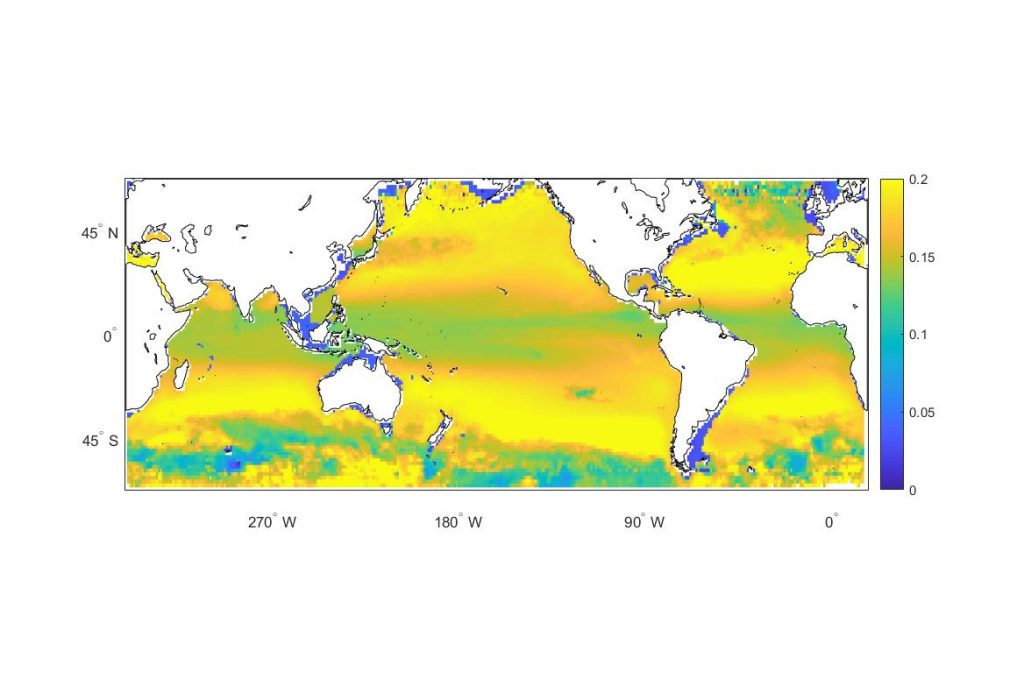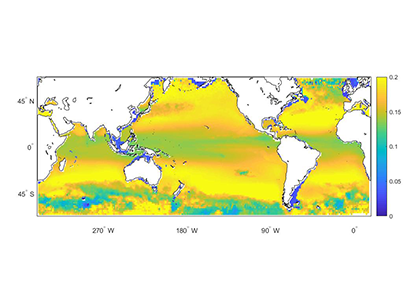Huge numbers of tiny marine animals, known as zooplankton, migrate between the surface ocean and the twilight zone (200 – 1,000 m below the surface) everyday; it is the largest migration event anywhere on the planet. How much carbon do these animals transport with them and how much do they leave behind sequestered in the deep ocean? In a recent publication in Global Biogeochemical Cycles, Archibald et al. (2019) used a simple model to estimate the magnitude of carbon flux into the twilight zone from zooplankton vertical migrations and observed that it was a significant contributor to carbon export on a global scale. The study also revealed strong regional patterns in migration-mediated carbon flux, with the greatest impact on export occurring at subtropical latitudes (Figure 1).

Figure 1. Percent increase in the modeled carbon export flux out of the surface ocean as a result of zooplankton vertical migrations.
Migrating zooplankton also consume significant amounts of oxygen at depth, generating a local maximum in the oxygen utilization profile at depth within the migration layer. By including the effect of the metabolism of migrating zooplankton, the model is able to produce a more detailed picture of oxygen utilization over the twilight zone. The model in this study effectively simulates the complex phenomenon of zooplankton vertical migrations, providing a simple framework that will allow researchers to investigate how this key component of the global carbon cycle might change under future climatic conditions. For example, if increased stratification leads to a greater representation of small cells in phytoplankton communities, then zooplankton migration-mediated carbon export is expected to make up a proportionally larger fraction of the total carbon export flux.
Authors:
Kevin M. Archibald (Woods Hole Oceanographic Institution and Massachusetts Institute of Technology)
David A. Siegel (University of California, Santa Barbara)
Scott C. Doney (University of Virginia)





